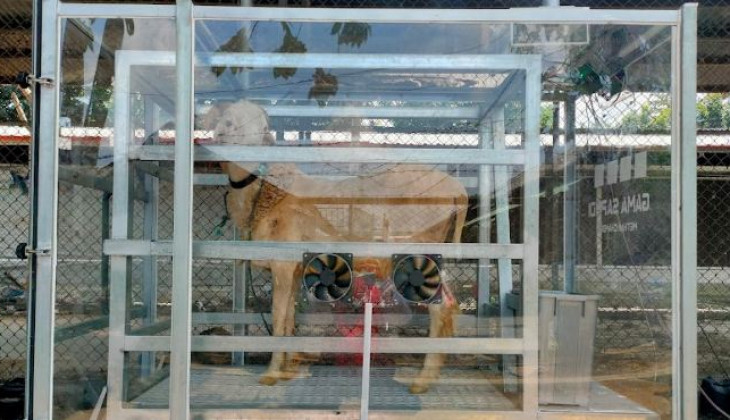UGM students have successfully created an IoT (Internet of Things) based tool that can calculate greenhouse gases produced in the livestock sector, especially ruminants. The tool, named Smart Technology in Respiration Chamber, calculates the amount of methane gas production and can be monitored in real-time with technology. This tool can be used to evaluate the production of greenhouse gases in the livestock sector, especially ruminants. The results of this innovation would play an important role in research related to climate change and the effects of global warming.
The head of the research team, Gardika Windar Prahara from the UGM Faculty of Animal Science, said that the innovation of greenhouse gas counters for ruminants has not yet been developed in Indonesia. In addition, methane chamber equipment for livestock research is expensive and relies on imports. Seeing this, he and the team, Auliya Muthiea Dien (Faculty of Animal Science), Andie Gagas Alfrianto (Vocational School), Remarezi Rafsanjani (Faculty of Mathematics and Natural Sciences), and Firlya Lananinggar (Faculty of Animal Husbandry), decided to innovate a detection tool that can assist the development of research in mitigating greenhouse gas production and evaluation of livestock management and feed efficiency.
The Smart Technology in Respiration Chamber device, named GAMA-Sapudi, can measure several levels of greenhouse gases such as carbon dioxide (CO2), methane (CH4), hydrogen sulfide (H2S), ammonia (NH3), nitrous oxide (N2O), as well as temperature and humidity in real-time supported by IoT technology. This device utilizes livestock gas output and an Arduino Nano microcontroller connected to various sensors to obtain complete data input. “All the obtained data will be computed and displayed on an LCD located on the outside of the monitoring tool, which will be displayed online with the internet,” said Gardika.
By using online media with the ESP8266 wifi module sent to the user’s Website Dashboards and connected to the internet, the tool can be monitored and regulated in real-time. “Our greenhouse gas counter uses IoT, and the calculation results will be connected to the Dashboards Website, which has been designed so that it can be accessed and monitored easily via a cellphone or computer,” said team leader, Gardika.
Advisory Lecturer for the PKM Team, Dr. Muhsin Al Anas, said Indonesia is one of the countries that produce large amounts of greenhouse gases. Ruminant farms such as cattle, buffalo, sheep, and goats produce methane from the fermentation process in the rumen as a result of converting grass into an energy source. Moreover, the feed given by farmers is mostly agricultural waste with low quality and high fiber content. “This tool can be an innovative breakthrough to improve the quality of research to mitigate the effects of greenhouse gases so that we can develop environmentally friendly and sustainable livestock,” he said.



